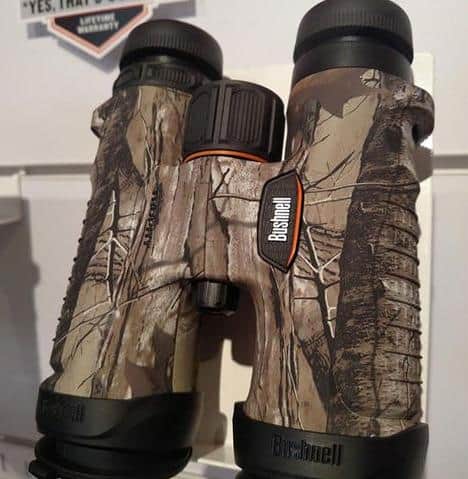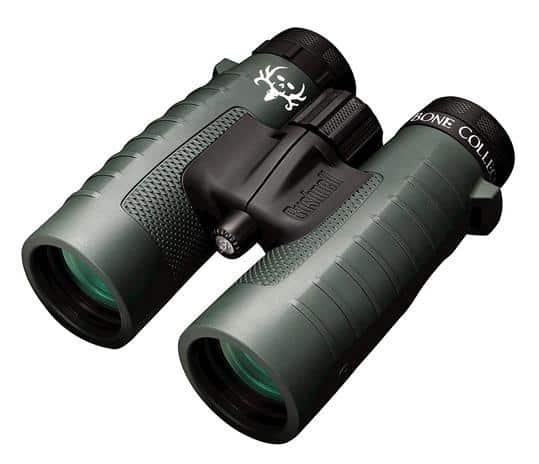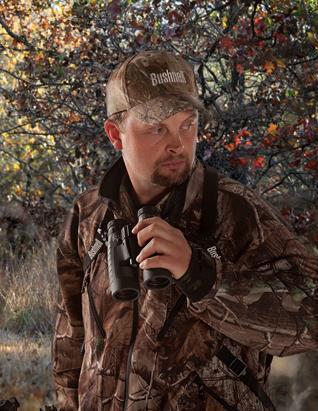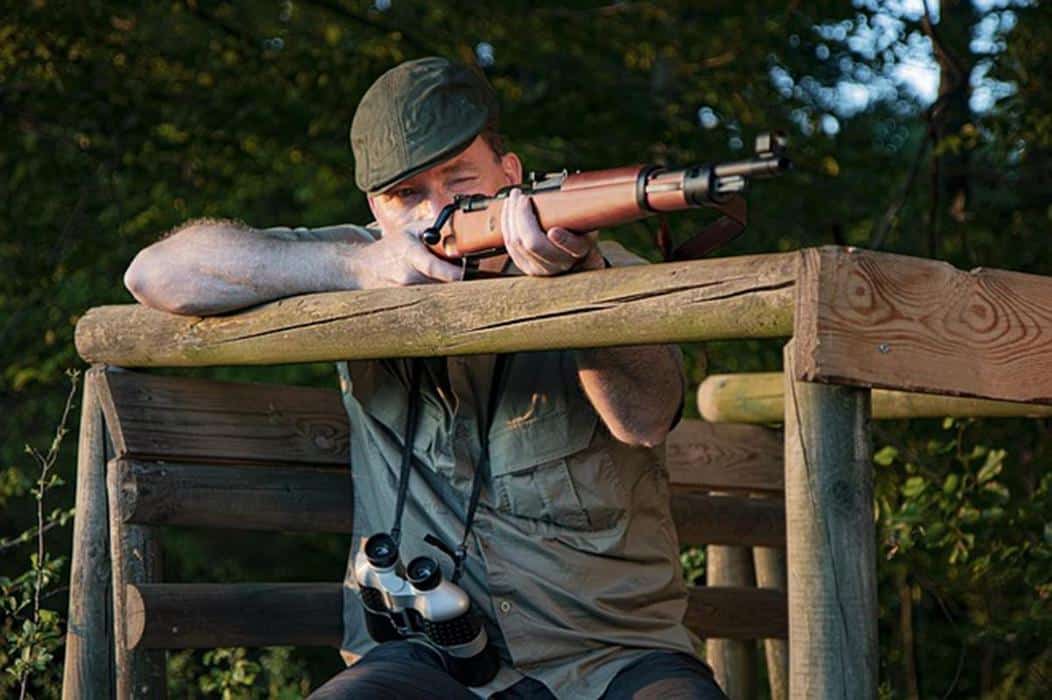The Bushnell Trophy and Trophy XLT binoculars are, without a doubt, indispensable tools for outdoor enthusiasts. But their significance doesn’t end with nature lovers. If you want to get a better view of a sporting event, these two types of binoculars really come in handy.
Main Specifications of Bushnell Trophy and Trophy XLT
|
Features |
||
|
Magnification |
10x 42, 8x 42 |
10x 42 |
|
Focus system |
Center focused |
Center focused |
|
Prism system |
Roof |
Roof |
|
Weight |
25.3 oz |
25.3 oz |
|
Prism glass |
Bak-4 |
Bak-4 |
|
Field of view |
330ft/1000 yards |
325ft/1000yards |
|
Lens diameter |
32mm |
42mm |
|
Amazon product price |
Though the Bushnell line of binoculars is chock full of high-performance features and extremely popular, you shouldn’t struggle to pick between these two. One of these units if far more suited for your applications than the other.
In this article, we’ll give a detailed comparison of Bushnell Trophy vs Trophy XLT to help you find the right fit for your needs.
Bushnell Trophy vs Trophy XLT: A detailed comparison
Design and build

When the construction of your binoculars is right, then you know instantly that the optic equipment is durable. Well, the Trophy and Trophy XLT are some of the toughest binoculars you’ll find.
The XLT has a nitrogen-infused lens. Usually, nitrogen is used in place of the naturally occurring oxygen so as to prevent moisture buildup that can fog the binoculars.
Additionally, the lens is O-ring sealed. The purpose of this seal is to create an air- and- the watertight barrier between the lens, focusing system and the chassis of the device.
What’s the bottom line?

This means that the XLT is both fog-proof and waterproof. So even if you’re hunting in brutally cold temperatures, you don’t have to worry that your binoculars will get damaged or perform poorly.
The Bushnell Trophy binoculars feature the same waterproof, fog proof build and then some. We’re referring to its housing, which is made of a fairly thick rubber armoring with a fine texture. The beauty of this rubber casing is that it serves a dual purpose. First, it provides an excellent grip even in wet conditions and second, improves the durability of the device.
Colors
One area where these Bushnell binoculars differ significantly is in the color options. While the XLT is only available in green, the Bushnell Trophy comes in camo and green variations.
If you’re not very particular on color and style or won’t be using the device in situations that require you to mask your identity, the XLT will suffice. But for military operations and hunting expeditions where you don’t want your enemies to spot you, the Bushnell Trophy is a better alternative because of its camo casing.
Controls
Another noteworthy feature is the massive center-focus knob on the Bushnell Trophy. This has been included to provide easy and precise adjustments. In the case of Bushnell XLT, the manufacturer has incorporated a diopter adjustment feature. This enables you to tweak the binocular to your vision.
Weight
When it comes to weight, the Trophy XLT weighs slightly less than the Camo 10 x 42mm. The XLT weighs 25 ounces while the latter weighs 25.3 ounces.
If you’re planning to carry your binoculars for long distances or don’t have that much storage room, you’ll probably want a lighter unit.
Thankfully, Bushnell Trophy comes in several variations based on magnification and lens size. The lightest is the 8 x 32mm Green-colored Trophy which tips the scale at 15.5 ounces.
But if the weight is not a problem, you can go for the heavier 8 x 42mm binoculars that weigh 25.8 ounces.
Lens
Type of the prism used
Both the Trophy XLT and Bushnell Trophy have roof prism mechanisms. What this means is that they have two aligned barrels causing their eyepieces and objective lenses to be closer to one another than with Porro prism binoculars.
You’re probably wondering: does the roof prism construction have any significant advantages?
Yes, it does.
It results in a more streamlined design which makes the device lightweight and compact.
Magnification
When it comes to magnification, the Bushnell Trophy comes in two main variations- 8x and 10x. In contrast, the Trophy XLT is only available with a magnification of 10x.
Some people automatically assume that binoculars with higher magnification are the best. But this is not entirely true as there are certain applications where lower magnification is preferred.

Take note that lower magnification binoculars offer a larger field of view and increase image stabilization. This means that for activities like bird watching and hunting where you need plenty of coverage to target your prey, the smaller 8x binocular is the best option.
10x binoculars are better suited for activities like wildlife observation. In this instance, you’re not looking for highly stabilized images neither do you need to optimize the field of view.
Sporting events are another area where 10x binoculars prove to be handy. Since there’s not too much movement going on and the sports field is not excessively big, you don’t need to worry about the field of view or image stabilization.

In addition to the 10x magnification, the Trophy XLT also features a fast-focus design. This additional element helps you capture action in-the-moment.
The fast focus is a very useful feature for bird watchers and sports fans who wouldn’t want to miss out on any action. Bird watchers will be able to view birds when they’re taking off or pouncing on prey and sports lovers will get the perfect shots of their favorite sports games.
Objective lens
The objective lens is another aspect where the XLT and Trophy differ.
Here’s the deal:
Trophy XLT comes in only one lens size: a 42-millimeter diameter. Conversely, Bushnell Trophy is available in 32- and 42-millimeter sizes.
Field of view
Regardless of what you’ll be using the binoculars for, the field of view (FOV) is a crucial factor to consider.
With the Trophy XLT, you get an impressive 320ft FOV at 1000 yards. But this does not match up to the Bushnell Trophy, whose 10x42mm unit offers 330ft at 1000 yards. The 8x42mm unit offers the best field of view of 395ft at 1000 yards.
The benefit of having a wider field of view is that it allows you to spot objects without shifting the position of your binoculars. This is particularly important for bird watching, hunting and tracking the movements of players in sports events.
Image quality
One of the reasons why the Bushnell Trophy and Trophy XLT are popular binoculars is because of the razor-sharp viewing experience they offer.

This is made possible by the presence of fully multi-coated lenses that ensure proper light transmission. The fully multi-coated lens means that all air to glass surfaces are coated with numerous anti-reflection layers resulting in bright and clear images.
Unfortunately, the manufacturer does not specify whether the binoculars are suitable for nighttime use.
Features
Both binoculars come with an array of accessories. These include:
- A neck strap – this is one of my favorite additions. It gives me instant access to the device while also freeing my hands to engage in other tasks.
- Lens covers – protect the lens from any external elements like dust
- Carrying case for easy portability and added protection
- Deluxe binocular harness facilitates better usage of the device
Similarities and differences
Similarities
- Roof Prism systems
- Fully multi-coated optics
- Waterproof, fog proof construction
- 10x magnification power
Differences
- The Bushnell Trophy comes with 8x or 10x magnification power while the XLT only has 10x magnification power
- Bushnell Trophy has either 42mm or 32mm lens; Trophy XLT only has a lens diameter of 42 mm
- Trophy XLT is available in green color while the Bushnell Trophy is available in green and camo versions
- Bushnell Trophy field of view is 330ft at 1000 yards while that of the XLT is 325ft at 1000 yards
Pros and cons
Pros of Bushnell Trophy
- Comes with focus knob for convenient adjustment
- Wider field of view
- Available in camo color, which is perfect for hunting and military applications
- A variety of lens sizes
- Has a textured, non-slip casing
Cons of Bushnell Trophy
- Lacks the fast-focus technology
Pros of Trophy XLT
- Lighter and more compact
- Fast-focus wheel improves the viewing experience
- Includes the Deluxe binocular harness
Cons of Bushnell XLT
- Pricey
- A smaller field of view
Conclusion
Bushnell is a very prominent optics company, and it’s been around for quite a while now. Their range of binoculars is some of the best in the industry, as they’re well-suited for a range of applications- bird watching, hunting, boating, sightseeing and more.
The Bushnell Trophy and Trophy XLT are great examples of the high-quality craftsmanship that this brand is capable of achieving. And while they both offer decent performance, there are instances where one is superior to the other.
If you’re looking for a simple pair of binoculars that do not have all the frills associated with high-end binoculars, Trophy XLT is an excellent option. It’s cheaper, lighter and is equipped with fast-focus technology that enables you to view events as they happen.
However, the Bushnell Trophy with its camo casing, varied magnification power, and differently-sized lenses is the ultimate winner of the two options. It’s more versatile, which means that it addresses different consumer needs.



